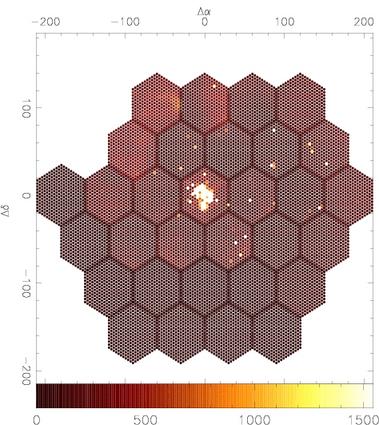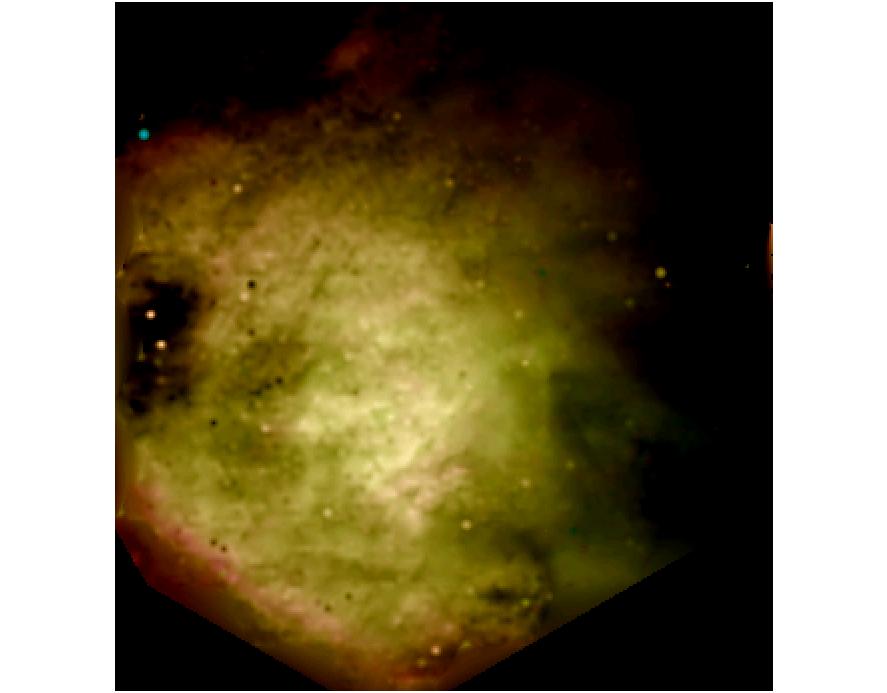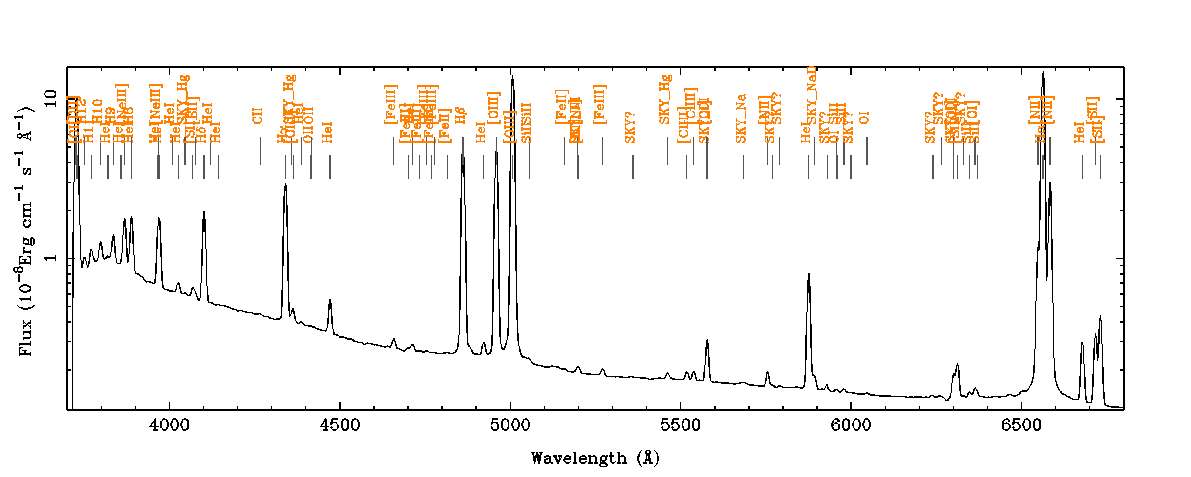 Fig 1:The 31 individual Mosaic Pointings of PPAK, comprising each one
331 individual spectra. Only 27 were used in the final datarelease.
Fig 1:The 31 individual Mosaic Pointings of PPAK, comprising each one
331 individual spectra. Only 27 were used in the final datarelease.
|
OBSERVATION AND DATA REDUCTION
Observations were carried out the night of the 21st of November 2004, using
the PMAS spectrograph (Roth et al. 2001) in the PPAK mode (Kelz et al. 2006),
at the 3.5m telescope at the Calar Alto Observatory. PPAK is a wide-field
Integral Field Unit, consisting of 331 science fibers packed in an hexagonal
bundle of 72"X64" field-of-view, with a filling factor of ~65%. In order to
test the capabilities of the instrument for Mosaicing, and covering of large
areas, we dedicated a low-transparency/bad seeing night to obtain
low-resolution spectroscopy of the largest possible area of the ORION nebulae.
The nights were allocated to Dr.M.Verheijen, who was directly involved in the
development of PPAK, and very well willing to perform this test in an
otherwise useless night.
We obtained 31 mosaic pointings of 2s exposure time on the central regions of
the ORION nebulae with PPAK using the V300 grating (range ~3700-7100Å,
FWHM~1.6 Å), and covering a total area of ~5'X6' (~30 arcmin2). To our
knowledge this is the largest area ever covered with an IFU in a contiguous
way. The data, comprising ~10000 individual spectra, are in the process of
being reduced using R3D (a package
for reducing IFS data also developed at Calar Alto), and they will be freely
distributed for the community, once the reduction and calibration processes
has been finished (as a "legacy" of the PPAK project).
Figure 1 illustrates the observing strategy of the Mosaic, starting from the
very center of the Nebulae, and following and spiral pattern. Each individual
pointing overlaps in one of the edge of the PPAK bundle hexagon with the next
one, to ensure enough overlapping for creating the Mosaic.
|
 Fig 1:The 31 individual Mosaic Pointings of PPAK, comprising each one
331 individual spectra. Only 27 were used in the final datarelease.
Fig 1:The 31 individual Mosaic Pointings of PPAK, comprising each one
331 individual spectra. Only 27 were used in the final datarelease.

